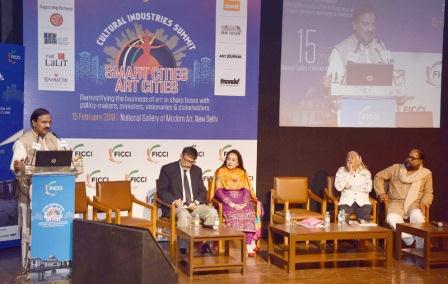Nature’s fury with unseasonal rains and chaotic traffic seemed to chime in with Malavika Sarukkai’s ‘Battle Within’, staged at the Kamani in Delhi, with the audience finding its way to the auditorium after harrowing travails.
Very different from the Bharatanatyam she has represented in for so many eventful years, this dramatic interpretation based on the Gita of the inner battles of Arjuna before confronting the outer battles must have given rise to many crises in the mind of the choreographer during the creative process. Looking at the Krishna/Arjuna interaction as a metaphor of the existentialist crisis of man, with the eternal Kurukshetra within the human mind struggling to navigate its way through the battle of life, the dancer needed to get out of the comfort zone of the usual accepted Bharatanatyam, in both structure and treatment. Since she was delving into the Duality within, she had to feel the energies of both vulnerable Arjuna and the totally calm and strong Krishna, and hence grew the idea of a solo treatment with her taking on both roles. Trying to catch a sense of the Cosmic enormity of the Vishwaroopam scene and the deep philosophy of the Gita with its grand scale of emotions, it is as if Malavika has willfully renounced all limitations, reaching beyond conventional Bharatanatyam, going all out to enlarge stylised movement and expression, investing it with a macro feel.
Her collaborator in this work Sumantra Ghosal with his visuals has brought in a new dimension to the work apart from creating in the dancer a realization that her creative process getting substantiated through these visuals helps in less saying more.
From a brilliantly colourful moving image on 3D screens, amidst swirling waters rises Vasuda Ravi’s voice “vedan uddharate Jaganni vahate bhu-golam udbibhrate, Daiyam darayate balim chalayate ksatra-kshyam kurvate I” the verse from the Gita Govinda saluting Krishna’s ten incarnations undertaken for the purpose of destroying evil and restoring the rule of righteousness. The dancer centre stage in a brilliantly designed costume, the striking mix of colours of the material covering the torso matching the visuals, through minimal predominantly postural representation, interprets the words, paying her salutation to Krishna.
Even as the Lusty roar of celestial conches blown by grand patriarch Bhishma, by Lord Krishna and Arjuna heralds the Kurukshetra battle cry, Arjuna’s inner battle is set off, on confronting the enemy camp. How does he battle to kill elders like Bhishma and his teacher Drona and his kith and kin playmates? Shivers run down his spine with the famous Gandiva bow slipping from his inert hands (‘gandivam sramsate hastat tvak cai va paridahyate’). Witnessing Arjuna’s faint heartedness for battle, Krishna reveals to Arjuna life’s only inevitability, that what is born must surely die, and that which dies shall be reborn. ‘jatasya hi dhruve mrtyuh dhruvam janma mrtasya ca’. Announcing how he is born amongst men to restore balance whenever righteousness decays. Krishna reveals his Cosmic form and limitless reach leaving Arjuna dazed. Taming the unsteady, turbulent mind is the first priority.
Fighting off his confusion with a still mind, which alone burns away layers of ego, Arjuna discovers that Krishna consciousness within him, that state of realization through an inner transformation that dharma demands fighting the war as an instrument of Krishna’s will, without expectations of gloating victory or sorrow in defeat.
What one admired was the intense, smouldering hour and ten minutes of stark, bold treatment, with no visual ornamentation through embroidered passages of nritta. The aesthetic subtlety lay in the lean treatment with no quarter given to needless choreographic padding. The aim was not prettiness. And the objective demanded matching thinking in the music makers. Murali Parthasarathy’s score, the deep voice of singer Aditya Prakash juxtaposed against the female voice of Vasudha Ravi, emphasizing the contrast in Arjuna ‘s vulnerability against the emphatic Krishna and the treatment and aesthetics of sound design with tabla, frame drum and keyboard accompaniment by Sai Shravanam were all responsible for mood creation. Never padded with cosmetic instrumentation, lone percussion or just the voice with minimal flute or veena accompaniment by J.B.Sruthi Sagar and Bhavani Prasad, helped create and preserve that mood of unmitigated starkness. Not to be ignored was Sandhya Raman’s aesthetic costume in colour, design texture, with slight accessory changes made to the main costume, to suit the various roles.
In all this let us not forget the excellent light designer Niranjan Gokhale whose inputs added so much to the total effect.
[adrotate group=”9″]









